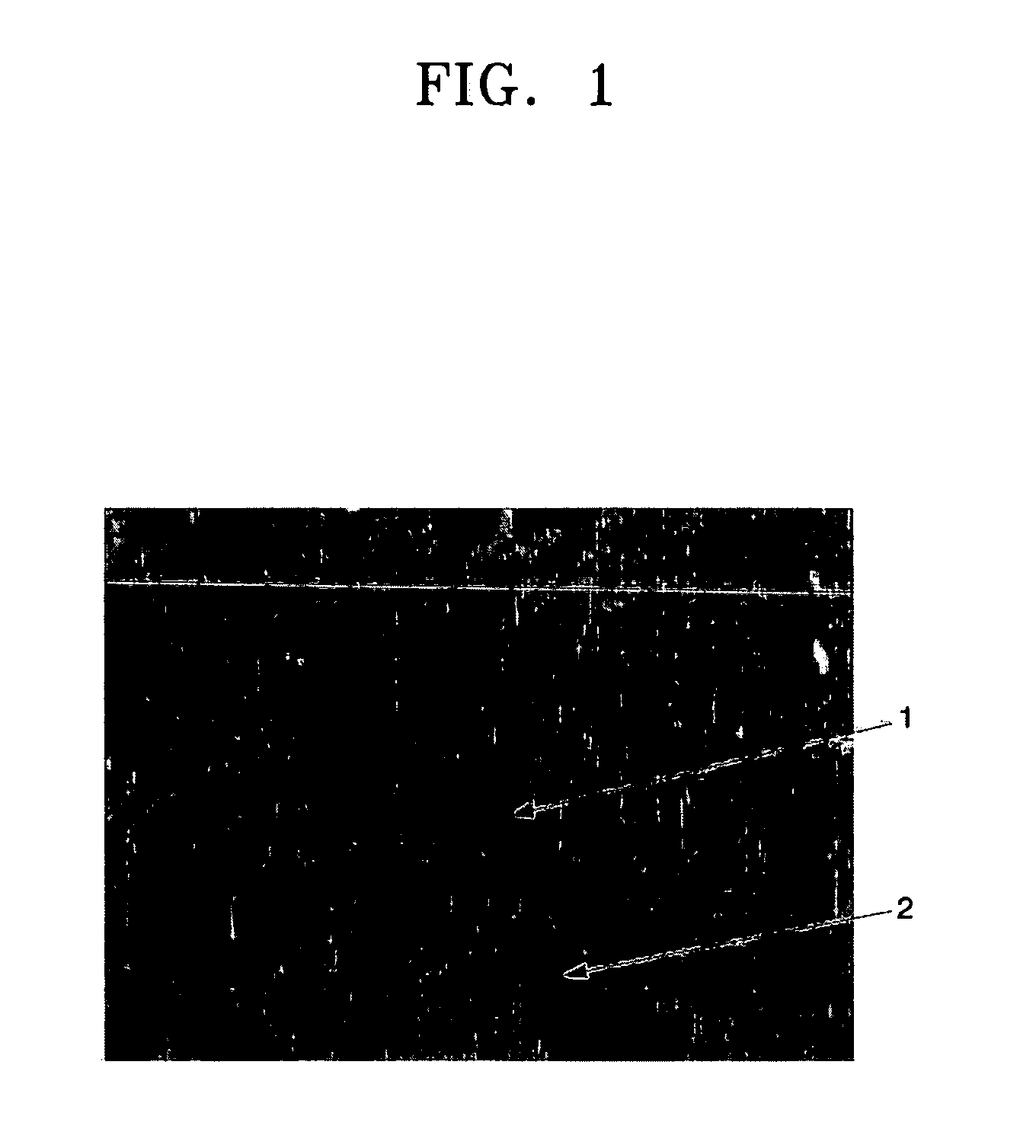Method of preparing particulate phase toner using fractional dissolution and particulate phase toner prepared using the same
a technology of fractional dissolution and toner, which is applied in the field of methods, can solve the problems of reducing fluidity, low yield, and difficulty in obtaining and controlling the electric property of the surface, and achieves the effects of eliminating environmental pollution, improving fluidity of toner, and easy control of the size and shape of toner particles
- Summary
- Abstract
- Description
- Claims
- Application Information
AI Technical Summary
Benefits of technology
Problems solved by technology
Method used
Image
Examples
example 1
[0039] A polyester resin (a number average molecular weight: 3,000, a weight average molecular weight: 60,000, Tg: 60° C.) was used as the binder resin and a water-soluble polyvinylalcohol was used as the water-soluble polymer. The ratio of the toner particle forming part was established to be 92% by weight of the polyester resin, 3% by weight of the charge controlling agent (Fe complex available from Hodogaya), 3% by weight of the colorant (carbon black available from Cabot), and 2% by weight of the releasing agent (PE wax available from Clariant). The water-soluble polyvinylalcohol was added in an amount of 30% by weight of the total weight to the toner particle forming components. The combination of the components was premixed and extruded through an extruder. The extruded material was then cooled at a cooling rate of 10° C. / min. The resulting cooled material was moderately pulverized to an average particle diameter of about 1 mm using a moderate pulverizer. Then, the pulverized ...
example 2
[0040] A styrene / acrylate copolymer resin (a number average molecular weight: 5,500, a weight average molecular weight: 68,000, Tg: 65° C.) was used as the binder resin. A water-soluble polyvinylalcohol was used as the water-soluble polymer and sugar (sucrose) was used as the polysaccharide. The toner particle forming component was prepared and contained 92% by weight of the styrene acrylate copolymer resin, 3% by weight of the charge controlling agent (Fe complex available from Hodogaya), 3% by weight of the colorant (carbon black available from Cabot), and 2% by weight of the releasing agent (PE wax available from Clariant). A 1:2 mixture of the water-soluble polyvinylalcohol and sugar was added in an amount of 30% by weight based on the total weight of the resulting mixture. The mixture was premixed and extruded through an extruder. The extruded material was cooled at a cooling rate of 5° C. / min. The cooled material was moderately pulverized to an average particle diameter of abo...
PUM
 Login to View More
Login to View More Abstract
Description
Claims
Application Information
 Login to View More
Login to View More - R&D
- Intellectual Property
- Life Sciences
- Materials
- Tech Scout
- Unparalleled Data Quality
- Higher Quality Content
- 60% Fewer Hallucinations
Browse by: Latest US Patents, China's latest patents, Technical Efficacy Thesaurus, Application Domain, Technology Topic, Popular Technical Reports.
© 2025 PatSnap. All rights reserved.Legal|Privacy policy|Modern Slavery Act Transparency Statement|Sitemap|About US| Contact US: help@patsnap.com

